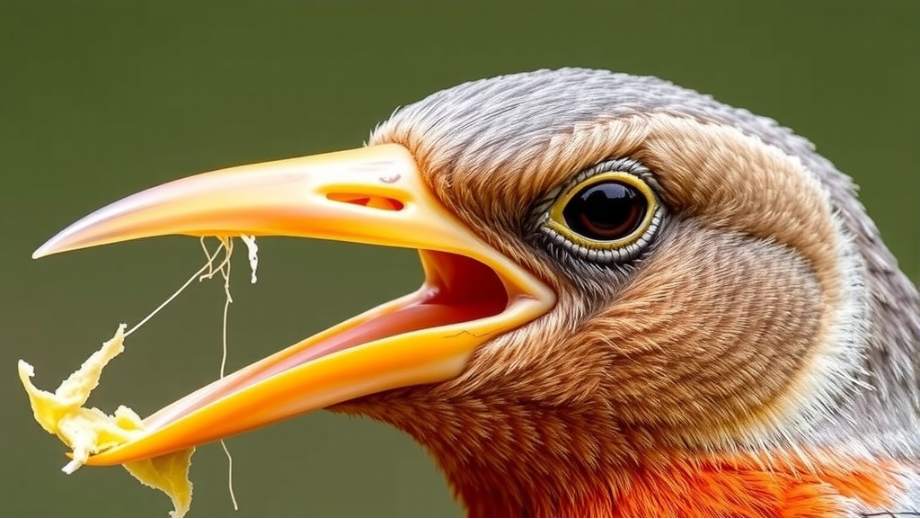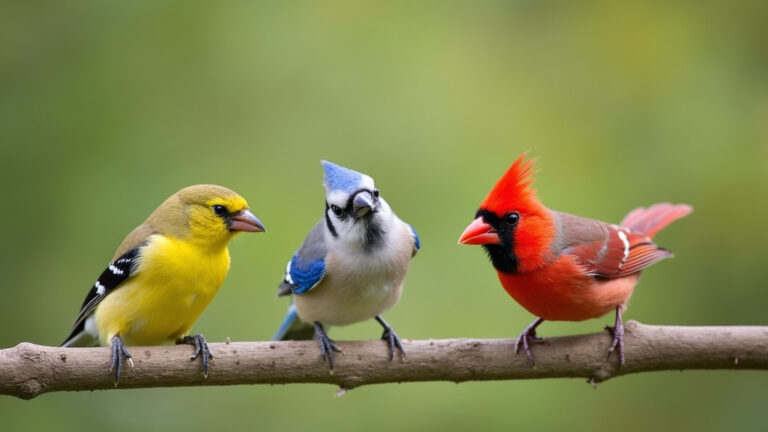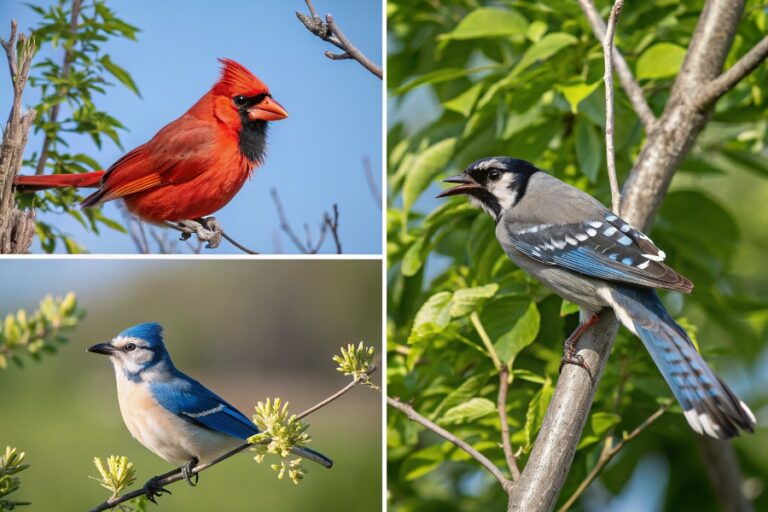How Do Birds Use Their Beaks? Many Uses of Bird Beaks
Bird beaks are remarkable tools that go far beyond just eating. Adapted uniquely for each bird species, a beak’s shape and structure are finely tuned for survival.
A bird uses its beak to eat, build, defend, or groom, this essential part of its anatomy is one of the most diverse and specialized among animal features.
Let’s dive into the amazing ways birds use their beaks!

Table of Contents
How Do Birds Use Their Beaks to Eat?
When we think about “how birds use their beaks” eating often comes to mind first. Birds use their beaks as specialized tools that help them access their primary food sources.
Drilling for Insects
Woodpeckers have strong, chisel-shaped beaks, perfect for pecking into tree bark to find insects.
Their beaks are reinforced with keratin and, along with their thick skulls, work like shock absorbers to protect them from injury.
Catching Insects Mid-Air
Birds like flycatchers, swallows, and martins use their broad, flat beaks to scoop insects right out of the air. Their agile beaks allow them to snap shut quickly as they catch flying insects on the go.
Sipping Nectar
Hummingbirds use their long, slender beaks to reach into flowers to sip nectar. They can quickly snap their beaks open and closed to catch small insects as well, providing a nutritious boost in their primarily nectar-based diet.
Ripping Meat
Raptors such as hawks and eagles rely on hooked beaks for tearing apart meat. This allows them to pull apart their prey into bite-sized pieces.
Predatory songbirds like shrikes also use this hooked design to hunt insects, small animals, and even other birds.
Cracking Seeds
Birds like grosbeaks, finches, and cardinals have short, thick beaks that are ideal for cracking seeds. Their cone-shaped beaks allow them to hold a seed, apply pressure, and break it open, making it easier to get to the nutritious kernel inside.
Skimming the Water’s Surface
Black skimmers have long lower beaks that allow them to fly along the surface of the water, scooping up fish as they go. Their specialized beaks allow them to “skim” while flying, catching food without needing to dive or stop.
How Do Birds Use Their Beaks to Survive?

Birds depend on their beaks not only for food but for a wide range of other survival tasks as well.
The adaptability of beaks shows how essential they are in helping birds thrive in different environments. Here are several ways birds use their beaks for survival:
- Building Nests
Birds often use their beaks as tools to gather materials and construct their nests. They may carry twigs, leaves, and mud or weave complex structures. This nest-building skill is essential for keeping their eggs and chicks safe from predators. - Feeding Their Young
Parent birds often transfer food directly from their beak to their chicks’ mouths, ensuring that the young birds get the nutrition they need. Some species even regurgitate pre-digested food to make it easier for their chicks to digest. - Grooming and Cleaning Feathers
Birds use their beaks to preen, keeping their feathers in top shape. Preening removes dirt, parasites, and helps align feathers, which is crucial for efficient flight and insulation. Some species also spread oils from their uropygial gland to waterproof their feathers. - Defending Themselves
For many birds, the beak is also a defense weapon. Larger birds, such as eagles and herons, can deliver powerful bites if threatened. Songbirds and smaller species also use their beaks to ward off predators or rival birds. - Storing and Saving Food
Birds like woodpeckers may use their beaks to store food for later use. Acorn woodpeckers, for instance, create “granaries” in tree trunks by drilling holes and storing acorns in them. This beak behavior helps them secure food supplies for times when food may be scarce.
How Birds Use Their Beaks to Adapt to Different Environments
Birds adapt their beak shapes and sizes according to the specific needs of their environment. The diversity of beak shapes reflects the diversity of habitats in which birds live:
- Wetlands: Birds like spoonbills use their flattened, spoon-shaped beaks to sift through shallow water, scooping up small fish, insects, and plants.
- Grasslands: Birds in grassland environments often have long, slender beaks for probing the ground and finding insects or worms.
- Urban Areas: Many birds in cities have adapted to scavenge from human sources, and their beaks help them forage through trash or even crack open small food packaging.
How Do Birds Use Their Beaks to Communicate?
Beaks are also a key part of bird communication. While songbirds rely on their voices, some birds use beak movements and tapping sounds to communicate with other birds.
Woodpeckers, for example, communicate territory boundaries by drumming on trees with their beaks.
During courtship, certain birds perform displays that include preening or offering food with their beaks as part of bonding.
What Makes a Bird’s Beak So Strong and Versatile?
Bird beaks are made of keratin, a strong protein also found in human hair and fingernails.
This keratin coating over a bony structure makes beaks durable, allowing birds to drill, crack, tear, and nibble as needed.
Just like our nails, a bird’s beak continuously grows and wears down, keeping it sharp and well-suited for each specific job.
Conclusion
Birds use their beaks for much more than just eating. Whether building nests, defending themselves, or gathering food, bird beaks are multi functional tools that are crucial for survival.
The variety of shapes and uses shows the amazing adaptability of bird species and how each has evolved to fit its environment.
Watching how birds use their beaks can provide incredible insight into their lives and the different roles these unique structures play in nature.






